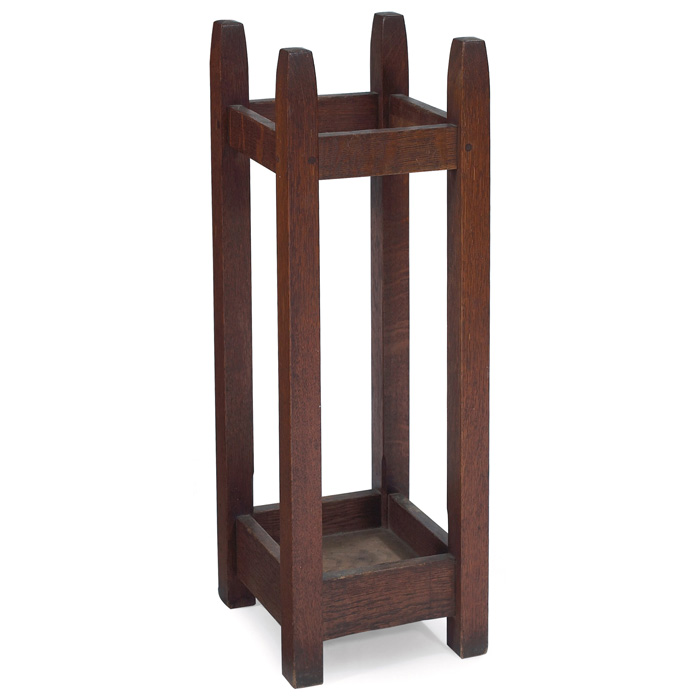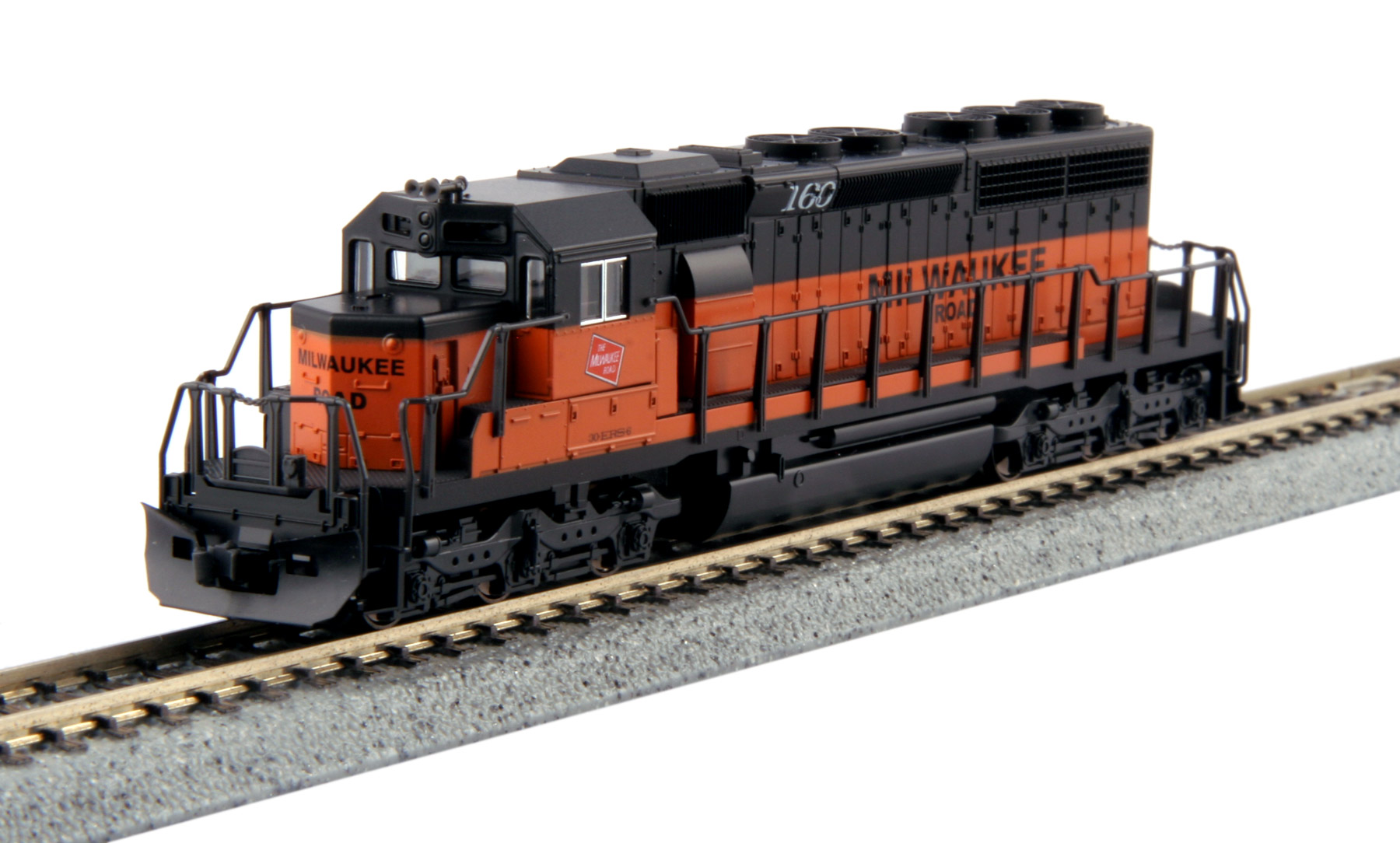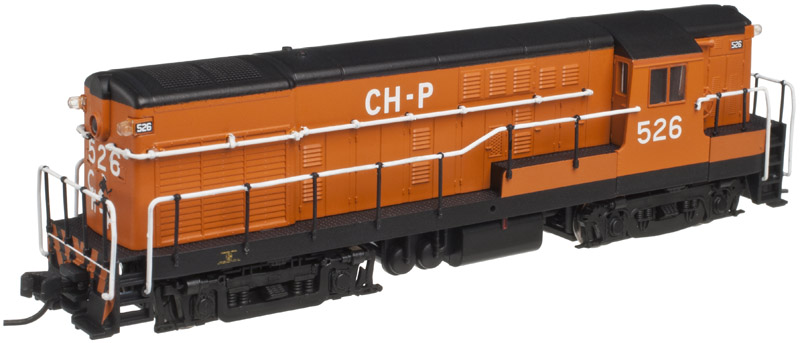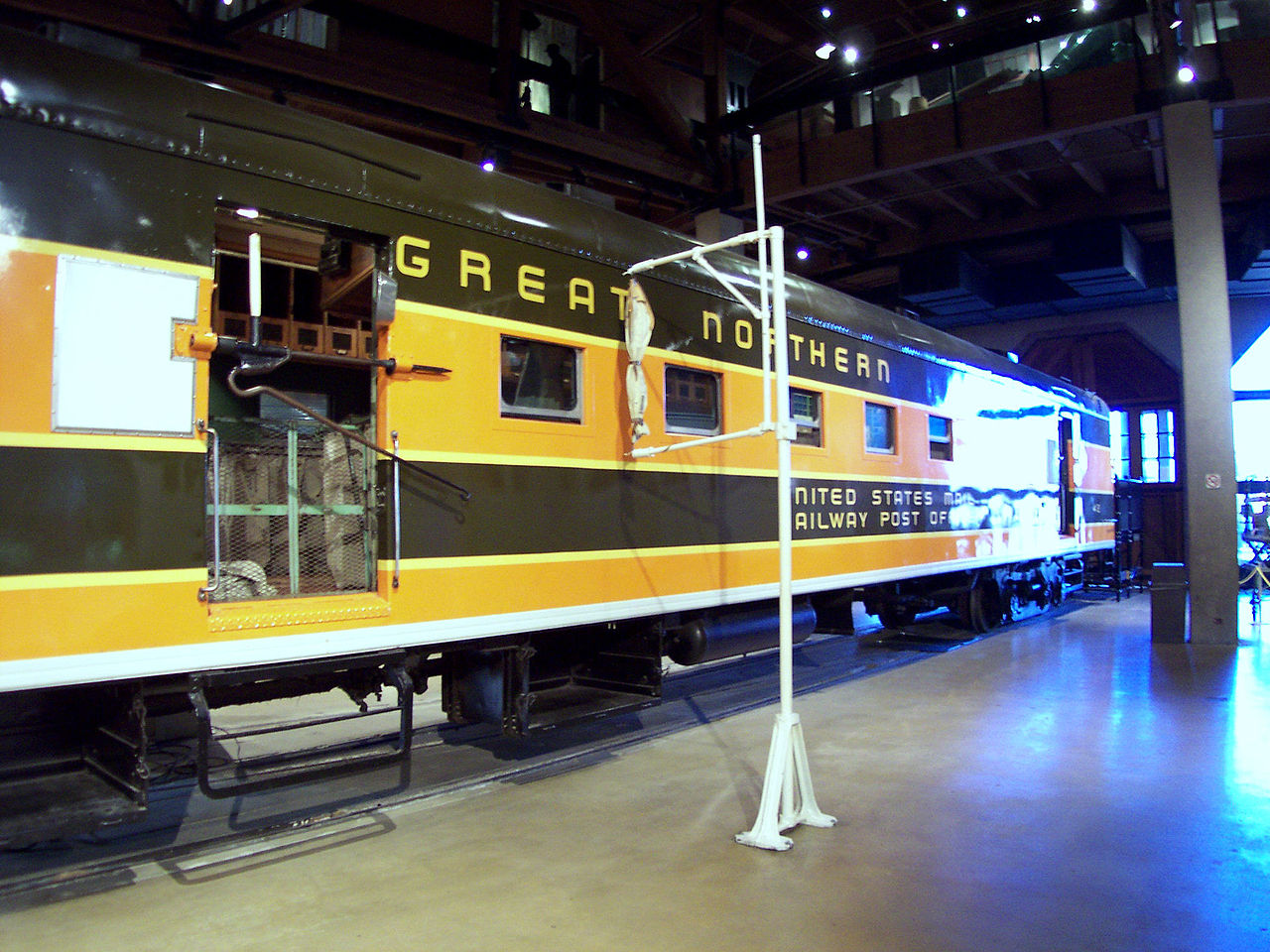Prototype History: In the post-war period, passenger rail service boomed. In order to increase efficiency, the railroads set to replacing their old wood, steel and concrete heavyweight passenger cars with newer lightweight, streamlined cars. The new cars were made from stainless steel, aluminum and Cor-Ten steel. These cars required less motive power to pull and were cheaper to manufacture. Production was also concentrated in a few manufacturers rather than each railroad making its own. This led to standardization which further reduced costs. The new "lightweight" cars were also given "streamlined" designs to make them more visually appealing. Budd, Pullman Standard and ACF were all well known manufacturers of these cars.
A railway post office, commonly abbreviated as RPO, was a railroad car that was normally operated in passenger service as a means to sort mail en route, in order to speed delivery. The RPO was staffed by highly trained Railway Mail Service postal clerks, and was off-limits to the passengers on the train.
This particular prototype represents the AC&F RPO-baggage built for GN in 1950-51 as series 37-42. It has a 60’ RPO compartment, with 5 windows and 2 doors, and a third door for the storage / baggage section. See here for more details.
Read more about RPOs on Wikipedia
A railway post office, commonly abbreviated as RPO, was a railroad car that was normally operated in passenger service as a means to sort mail en route, in order to speed delivery. The RPO was staffed by highly trained Railway Mail Service postal clerks, and was off-limits to the passengers on the train.
This particular prototype represents the AC&F RPO-baggage built for GN in 1950-51 as series 37-42. It has a 60’ RPO compartment, with 5 windows and 2 doors, and a third door for the storage / baggage section. See here for more details.
Read more about RPOs on Wikipedia
Road Name History: The New York Central Railroad (reporting mark NYC), known simply as the New York Central in its publicity, was a railroad operating in the Northeastern United States. Headquartered in New York City, the railroad served most of the Northeast, including extensive trackage in the states of New York, Pennsylvania, Ohio, Michigan, Indiana, Illinois, and Massachusetts, plus additional trackage in the Canadian provinces of Ontario and Quebec.
The railroad primarily connected greater New York and Boston in the east with Chicago and St.Louis in the midwest along with the intermediate cities of Albany, Buffalo, Cleveland, Cincinnati, and Detroit. NYC's Grand Central Terminal in New York City is one of its best known extant landmarks.
1853 company formation: Albany industrialist and Mohawk Valley Railroad owner Erastus Corning managed to unite ten railroads together into one system, and on March 17, 1853 executives and stockholders of each company agreed to merge. The merger was approved by the state legislature on April 2, and by May 17, 1853 the New York Central Railroad was formed.
In 1867 Vanderbilt acquired control of the Albany to Buffalo running NYC. On November 1, 1869 he merged the NYC with his Hudson River Railroad into the New York Central and Hudson River Railroad. Vanderbilt's other lines were operated as part of the NYC.
In 1914, the operations of eleven subsidiaries were merged with the New York Central & Hudson River Railroad, re-forming the New York Central Railroad. From the beginning of the merge, the railroad was publicly referred to as the New York Central Lines. In the summer of 1935, the identification was changed to the New York Central System.
In 1968 the NYC merged with its former rival, the Pennsylvania Railroad, to form Penn Central (the New York, New Haven and Hartford Railroad joined in 1969). That company went bankrupt in 1970 and was taken over by the federal government and merged into Conrail in 1976. Conrail was broken up in 1998, and portions of its system was transferred to the newly formed New York Central Lines LLC, a subsidiary leased to and eventually absorbed by CSX and Norfolk Southern. Those companies' lines included the original New York Central main line, but outside that area it included lines that were never part of the New York Central system. CSX was able to take one of the most important main lines in the nation, which runs from New York City and Boston to Cleveland, Ohio, as part of the Water Level Route, while Norfolk Southern gained the Cleveland, Ohio to Chicago, Illinois portion of the line called the Chicago line.
At the end of 1925, the New York Central System operated 11,584 miles (18,643 km) of road and 26,395 miles (42,479 km) of track; at the end of 1967 the mileages were 9,696 miles (15,604 km) and 18,454 miles (29,699 km).
Read more on Wikipedia.
The railroad primarily connected greater New York and Boston in the east with Chicago and St.Louis in the midwest along with the intermediate cities of Albany, Buffalo, Cleveland, Cincinnati, and Detroit. NYC's Grand Central Terminal in New York City is one of its best known extant landmarks.
1853 company formation: Albany industrialist and Mohawk Valley Railroad owner Erastus Corning managed to unite ten railroads together into one system, and on March 17, 1853 executives and stockholders of each company agreed to merge. The merger was approved by the state legislature on April 2, and by May 17, 1853 the New York Central Railroad was formed.
In 1867 Vanderbilt acquired control of the Albany to Buffalo running NYC. On November 1, 1869 he merged the NYC with his Hudson River Railroad into the New York Central and Hudson River Railroad. Vanderbilt's other lines were operated as part of the NYC.
In 1914, the operations of eleven subsidiaries were merged with the New York Central & Hudson River Railroad, re-forming the New York Central Railroad. From the beginning of the merge, the railroad was publicly referred to as the New York Central Lines. In the summer of 1935, the identification was changed to the New York Central System.
In 1968 the NYC merged with its former rival, the Pennsylvania Railroad, to form Penn Central (the New York, New Haven and Hartford Railroad joined in 1969). That company went bankrupt in 1970 and was taken over by the federal government and merged into Conrail in 1976. Conrail was broken up in 1998, and portions of its system was transferred to the newly formed New York Central Lines LLC, a subsidiary leased to and eventually absorbed by CSX and Norfolk Southern. Those companies' lines included the original New York Central main line, but outside that area it included lines that were never part of the New York Central system. CSX was able to take one of the most important main lines in the nation, which runs from New York City and Boston to Cleveland, Ohio, as part of the Water Level Route, while Norfolk Southern gained the Cleveland, Ohio to Chicago, Illinois portion of the line called the Chicago line.
At the end of 1925, the New York Central System operated 11,584 miles (18,643 km) of road and 26,395 miles (42,479 km) of track; at the end of 1967 the mileages were 9,696 miles (15,604 km) and 18,454 miles (29,699 km).
Read more on Wikipedia.
Brand/Importer Information: Centralia Car Shops is an N-Scale manufacturer based in Des Plaines Illinois. It is a wholly owned subsidiary of Des Plaines hobbies. Des Plaines Hobbies was founded by Ron Sebastian in 1984. Centralia subcontracts its manufacturing to InterMountain and 'piggy-backs' the production runs onto the InterMountain runs using the same factories in China as InterMountain. Shipping from factories in China is also coordinated with InterMountain as is distribution to retailers.
Des Plaines Hobbies is a old fashioned hobbyshop with an emphasis on Model Railroading. It was started 33 years ago when you could purchase a tube of glue and sticks of balsa wood. That is still true today, although we have added a few items. About 20 years ago we ventured into some light manufacturing and are also home to Centralia Car Shops, S Scale America, and O Scale America lines of kits, decals and parts. Also along the way we have purchased a few small lines that we still offer such as Microscale's S Scale decal line and Mullet River Model Works HO and S lines.
Des Plaines Hobbies is located 3 1/2 miles north of O Hare International Airport at 1524 Lee/Mannheim (US 12-45). Pace buses conveniently run north and south on Lee/Mannheim from O Hare and the Des Plaines Metra station (1 mile north). For drivers, there is parking for a couple hundred cars out front and on the right side of the store. We are located on the south side of the Jewel food store under the red awning. Come for a visit. ADA restroom available. Coffee is usually hot, if not, ask and we will put a pot on.
Des Plaines Hobbies is a old fashioned hobbyshop with an emphasis on Model Railroading. It was started 33 years ago when you could purchase a tube of glue and sticks of balsa wood. That is still true today, although we have added a few items. About 20 years ago we ventured into some light manufacturing and are also home to Centralia Car Shops, S Scale America, and O Scale America lines of kits, decals and parts. Also along the way we have purchased a few small lines that we still offer such as Microscale's S Scale decal line and Mullet River Model Works HO and S lines.
Des Plaines Hobbies is located 3 1/2 miles north of O Hare International Airport at 1524 Lee/Mannheim (US 12-45). Pace buses conveniently run north and south on Lee/Mannheim from O Hare and the Des Plaines Metra station (1 mile north). For drivers, there is parking for a couple hundred cars out front and on the right side of the store. We are located on the south side of the Jewel food store under the red awning. Come for a visit. ADA restroom available. Coffee is usually hot, if not, ask and we will put a pot on.
Item created by: CNW400 on 2020-12-04 09:24:33
If you see errors or missing data in this entry, please feel free to log in and edit it. Anyone with a Gmail account can log in instantly.
If you see errors or missing data in this entry, please feel free to log in and edit it. Anyone with a Gmail account can log in instantly.












